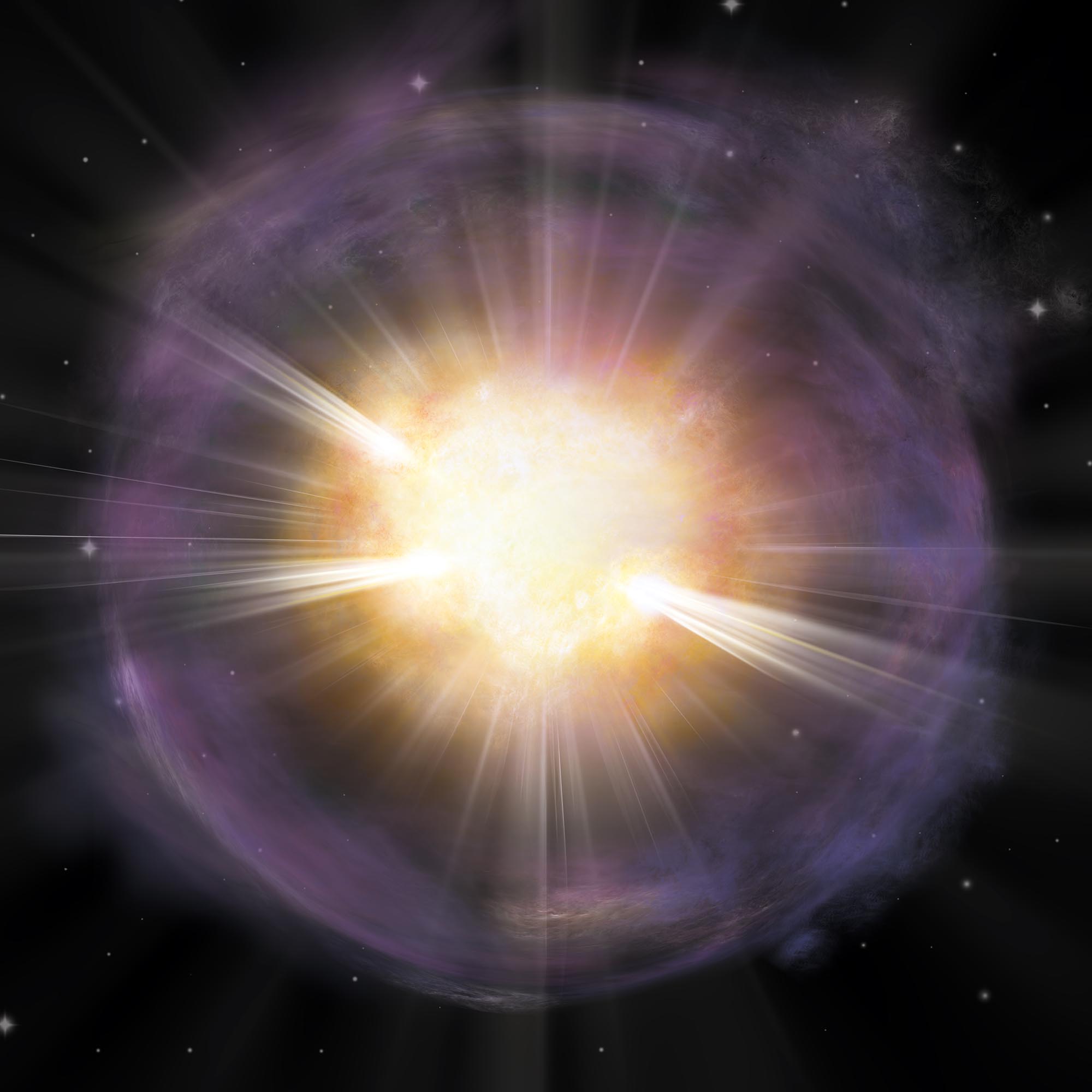NOIRLab: Astronomers Sink Their Teeth Into Special Supernova

Artist’s interpretation of the calcium-rich supernova 2019ehk Shown in orange is the calcium-rich material created in the explosion. Purple coloring represents gas shed by the star right before the explosion, which then produced bright X-ray emission when the material collided with the supernova shockwave. Credit: A. M. Geller/Northwestern University/CTIO/SOAR/NOIRLab/NSF/AURA
Calcium-rich supernovae, a unique type of exploding stars, produce up to half of the calcium in the Universe
Astronomers using several telescopes at NOIRLab, including the Southern Astrophysical Research (SOAR) Telescope, have obtained critical data on a particular type of exploding star that produces copious amounts of calcium. The calcium produced in this unique type of supernova explosion is the same calcium found in our bones and teeth and these events account for up to half of the calcium found in the Universe.
Thanks to detailed observations using the SOAR Telescope, located on Cerro Pachón in Chile, and a host of telescopes around the world and in space [1], astronomers have been able to probe the inner workings of a special type of supernova explosion. These particular explosions, from compact stars that lose copious amounts of mass late in their lives, appear to create the element calcium in their last dying gasps — and it is dispersed by the explosion throughout galaxies like the Milky Way. SOAR is a facility of Cerro Tololo Inter-American Observatory (CTIO), a Program of NSF’s NOIRLab.
“Most massive stars create small amounts of calcium during their lifetimes, but events like SN 2019ehk appear to be responsible for producing vast quantities of calcium and in the process of exploding disperse it through interstellar space within galaxies. Ultimately this calcium makes its way into forming planetary systems,” according to Régis Cartier, an astronomer at NOIRLab and a member of the research team, “…and into our bodies in the case of our Earth!”
Raffaella Margutti, senior author of the study at Northwestern University, adds that prior to this event astronomers had only indirect information on these events, called calcium-rich supernovae. “With this direct evidence, we can now confidently rule out the production of calcium-rich supernovae by the vast majority of massive stars,” said Margutti.
“By observing what this star did in its final month before it reached its critical, tumultuous end, we peered into a place previously unexplored, opening new avenues of study,” said Wynn Jacobson-Galan, of Northwestern University, who led the study. The results are published in the 5 August issue of The Astrophysical Journal, which included contributions from a huge collaboration of nearly 70 co-authors from over 15 countries.
The SOAR data were critical to the result. In particular, the infrared spectrum acquired with SOAR, only the second ever obtained of a calcium-rich supernova, opened a new window on the kind of elements expelled by the supernova — elements such as helium, carbon, magnesium and calcium, all of which have a clear spectral fingerprint at infrared wavelengths. Understanding how much and what kind of elements are expelled by a supernova provides critical clues to the nature of the explosion — what kind of star exploded and how it exploded. It also provides insights into how calcium-rich supernovae produce so much calcium. While that interesting question remains an open issue, the SOAR observations represent some of the first steps toward an answer.
